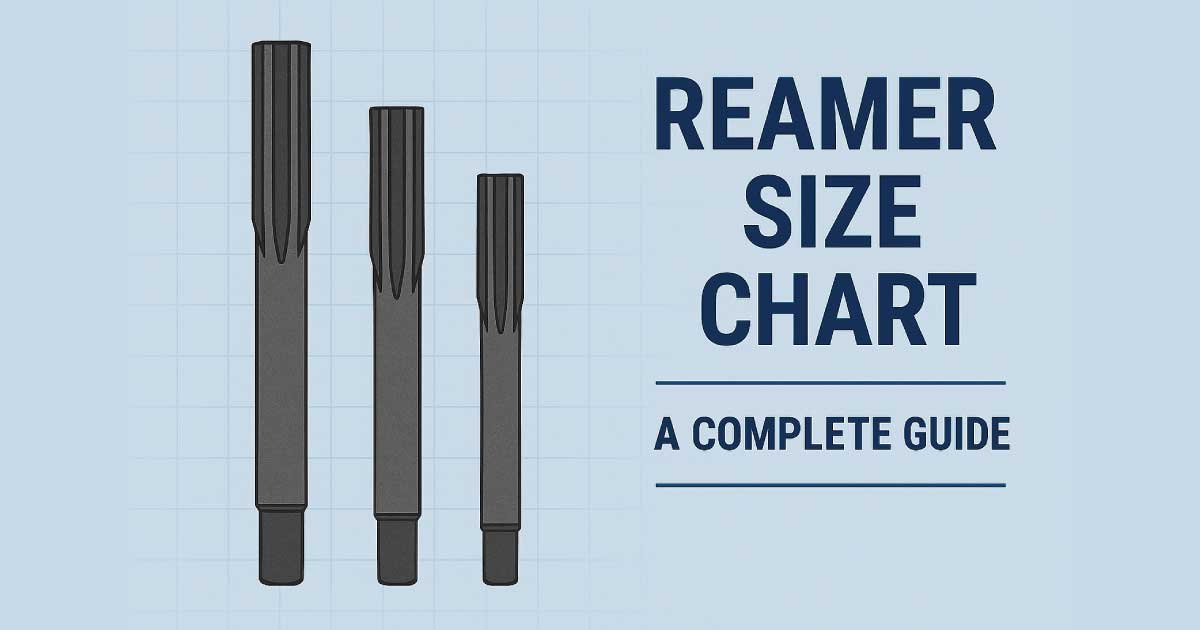When it comes to precision machining, reamers are indispensable tools for achieving accurate hole sizes and smooth finishes. Whether you are a professional machinist, an engineer, or a hobbyist working on metal projects, understanding reamer sizes is crucial. In this guide, we will explore the different types of reamers, their applications, and provide a comprehensive reamer size chart that you can use for reference.
What is a Reamer?
A reamer is a cutting tool used to slightly enlarge and smooth out pre-drilled holes. Unlike drills, which remove large amounts of material, reamers remove very small amounts to achieve a precise diameter. This makes them ideal for finishing operations where accuracy and surface quality are essential.
Reamers can be made of high-speed steel (HSS), carbide, or cobalt alloys, depending on the material being machined. Their cutting edges are designed to ensure minimal deviation from the desired hole size.
Types of Reamers
There are several types of reamers, each suited for specific applications:
Hand Reamers: Used manually, hand reamers are ideal for delicate work or small projects. They provide better control but are slower than machine reamers.
Machine Reamers: Designed for use in drill presses, lathes, or CNC machines. Machine reamers can achieve higher precision and consistency in industrial applications.
Tapered Reamers: These reamers gradually increase in diameter from the tip to the end. They are commonly used for creating tapered holes for fasteners or dowels.
Adjustable Reamers: These reamers can be adjusted within a small range of sizes, making them versatile for applications where exact dimensions may vary.
Shell Reamers: Designed for large-diameter holes, shell reamers are mounted on arbors and used in industrial milling machines.
Why Reamer Sizes Matter
Choosing the correct reamer size is critical for several reasons:
Precision: The right size ensures the hole meets the exact diameter required for proper fit.
Surface Finish: Correct sizing minimizes roughness and produces a smooth finish.
Tool Longevity: Using a reamer that is too small or too large can damage the tool or the workpiece.
Assembly Fit: Accurate holes are essential for parts that need to fit together tightly, such as bolts, pins, or bearings.
Reamer Size Chart
Here’s a comprehensive reamer size chart covering both inch and metric sizes. This chart can serve as a quick reference for machinists and engineers:
| Reamer Size (Inches) | Drill Size (Inches) | Hole Fit Type |
|---|---|---|
| 1/8 | 0.125 | Standard |
| 3/16 | 0.1875 | Standard |
| 1/4 | 0.250 | Standard |
| 5/16 | 0.3125 | Standard |
| 3/8 | 0.375 | Standard |
| 7/16 | 0.4375 | Standard |
| 1/2 | 0.500 | Standard |
| 9/16 | 0.5625 | Standard |
| 5/8 | 0.625 | Standard |
| 3/4 | 0.750 | Standard |
| Reamer Size (Metric) | Drill Size (mm) | Hole Fit Type |
|---|---|---|
| 3 mm | 2.9 mm | Standard |
| 4 mm | 3.9 mm | Standard |
| 5 mm | 4.9 mm | Standard |
| 6 mm | 5.9 mm | Standard |
| 8 mm | 7.9 mm | Standard |
| 10 mm | 9.9 mm | Standard |
| 12 mm | 11.9 mm | Standard |
| 14 mm | 13.9 mm | Standard |
| 16 mm | 15.9 mm | Standard |
| 20 mm | 19.9 mm | Standard |
Note: Drill sizes in the chart are slightly smaller than the reamer sizes to allow for proper finishing. Always check manufacturer specifications for material-specific adjustments.
Reamer Size Chart, Pdf
How to Choose the Right Reamer Size
Selecting the right reamer involves considering the following factors:
Material of the Workpiece:
Soft metals like aluminum may require a slightly tighter fit, while harder metals like steel may need a slightly larger pilot hole.
Type of Fit Required
Loose fit: Allows for easy assembly. Slightly larger hole recommended.
Tight fit: Ensures components are snug. Slightly smaller drill size recommended.
Type of Reamer
Match the reamer type to your machine and the hole’s purpose. For example, tapered reamers are ideal for dowel holes, while adjustable reamers are best for variable fits.
Hole Depth:
Longer holes may need specialized reamers to maintain straightness and accuracy.
Also Read:
Tips for Using Reamers
Always drill a pilot hole that is slightly smaller than the reamer size.
Use cutting fluid to reduce heat and improve surface finish.
Apply consistent pressure while reaming; avoid forcing the tool.
Clean the hole and reamer after each use to remove chips and debris.
Regularly check the reamer for wear and replace it if edges become dull.
Conclusion
Reamers are essential tools for precision machining, and understanding their sizes ensures accurate, smooth, and functional holes. Whether you are working in inches or millimeters, the Reamer Size Chart provided in this guide can help you quickly select the correct tool for your project. Proper selection and careful use of reamers not only improve the quality of your work but also extend the life of your tools.
Having a reliable reference like this chart on hand can save time, reduce errors, and improve the overall efficiency of your machining projects. Keep in mind the type of fit, material, and hole requirements, and your finished work will meet professional standards every time.
Also Read:

